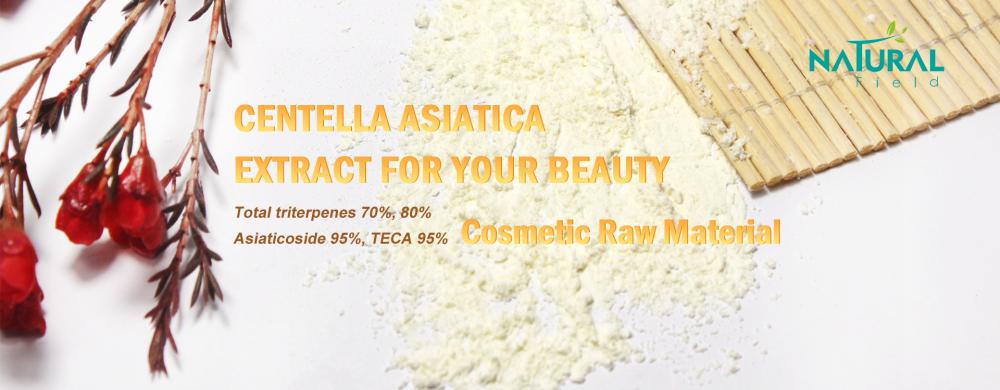Do Chinese infants need vitamin A?
Vitamin A deficiency remains a public health problem for women and children, affecting approximately 190 million pre-school children and 19 million pregnant women, and is the most burdensome in the WHO Region of Africa and Southeast Asia. During pregnancy, vitamin A is essential for maintaining maternal health and fetal health and development. For pregnant women with moderate vitamin A deficiency, the fetus can still get enough vitamin A for its development, but it needs to use pregnant women's vitamin A reserves. The recommended dose of vitamin A supplements for pregnant women is generally well tolerated; however, when intake exceeds 10,000 IU/day or 25,000 IU/week, vitamin A may be toxic to pregnant women and their fetuses. As a precursor of vitamin A, pregnant women may supplement beta-carotene better than vitamin A-based supplements because there are no reports of birth defects caused by excessive beta-carotene. The World Health Organization does not recommend the inclusion of vitamin A during pregnancy into routine antenatal care for the prevention of maternal and infant morbidity and mortality. Pregnant women should be encouraged to consume adequate amounts of nutrients, and the best way is to obtain a healthy balanced diet. Vitamin A supplementation during pregnancy is recommended only in areas where vitamin A deficiency poses a serious public health problem to prevent night blindness. Only when the incidence of night blindness in the population reaches more than 5% can it be considered that vitamin A deficiency in this population constitutes an important public health problem. During lactation, vitamin A is essential for maternal health and vision. Nutritionally good mother's milk is rich in vitamin A and is the best source of vitamin A for infants. Therefore, mothers are encouraged to breastfeed exclusively for the first 6 months after delivery. In areas where vitamin A deficiency is widespread, mothers can provide low concentrations of breastmilk in vitamin A, but if the mother is unable to meet the increased vitamin A requirement during lactation through the diet, her body will try to use vitamin A reserves in the liver to compensate for Vitamins in breast milk. A low level condition. The World Health Organization does not recommend supplementing vitamin A in postpartum women to reduce maternal and infant morbidity and mortality. Postpartum women should be encouraged to ingest adequate amounts of nutrients. The best way is to obtain a healthy balanced diet. Infants and young children need more vitamin A to support their rapid growth and help them resist infections, such as severe vitamin A deficiency in this age can cause visual impairment (night blindness) and other consequences. Factors affecting the vitamin A status of young infants include: vitamin A liver reserves at birth, vitamin A ingested via breast milk and other foods, and vitamin A loss due to infections (including infections caused by parasites). Do Chinese infants need vitamin A? In low-income countries and middle-income countries, infants are very likely to have insufficient vitamin A intake, partly because maternal nutritional status is poor, resulting in low levels of vitamin A in breast milk. In the past, vitamin A supplements (50000 IU) were generally recommended for infants under 6 months of age who were not breastfeeding, and breastfeeding but whose mothers had not been given vitamin A supplementation after delivery. But so far, a number of studies have been conducted on single or multiple vitamin A supplementation programs for infants aged 1 to 5 months and found to have little effect on serum retinol concentrations and no effect on mortality. Therefore, the World Health Organization does not recommend the use of vitamin A supplementation for infants aged 1 to 5 months as a public health intervention to reduce morbidity and mortality. Maternal mothers should be encouraged to adhere to exclusive breastfeeding within 6 months of delivery to ensure optimal growth, development and health for the infant. Severe vitamin A deficiency can cause visual impairment (night blindness) in children or increase the risk of morbidity and mortality from childhood infections such as measles and infections that can cause diarrhea. Of the deaths of children under 5 years of age in Africa, 6% are associated with vitamin A deficiency and 8% in South East Asia. In areas where vitamin A deficiency has constituted a public health problem, the World Health Organization recommends supplementing high doses of vitamin A in infants between 6 and 59 months of age. However, to determine if vitamin A deficiency constitutes a public health problem, the prevalence of vitamin A deficiency in the population needs to be estimated through specific biochemical and clinical indicators. It is generally believed that the prevalence of night blindness in children aged from 24 months to 59 months is 1% or more, or the vitamin A deficiency in infants and children aged 6-59 months (serum retinol is lower than 0.70 μmol/L) prevalence is 20 % or more of the area, supplemented with 100,000 IU for infants aged 6-11 months and 200,000 IU supplemented for children aged 12-59 months, which is enough to provide protection for 4 to 6 months, although the report has 3%~7 % of children experienced side effects such as headache, nausea/vomiting, and diarrhea. However, these symptoms are usually transient and the vast majority occur and disappear within 24 hours after ingestion. To date, there have been no reported cases of death from vitamin A toxicity due to excessive vitamin A intake. In the paper “The Survey of Vitamin A Deficiency in Children under 6 in China†mentioned in the article “Why Do There Be Differences in Chinese and Foreigners, Why Should China's Infants and Young Children Be Compatible with Vitamin AD?â€, the survey results are: Questionnaires for children aged between 24 and 71 months Among the 5,914 people, 8 were children with night blindness (0.14%), 7 were dry with conjunctivitis (0.12%), and 61 were with mothers with night blindness (1.0%). All of the above cases of clinical vitamin A deficiency were in rural areas, mainly in rural areas in poor areas. Of the 8669 children aged 0 to 5 years in 14 provinces, 11.7% had serum vitamin A ≤ 0.7 micromol/L. Of the 14 provinces and cities surveyed, only 25% or more of infants and young children suffer from vitamin A deficiency in Guangxi (36%); in rural areas, Guangxi, Xinjiang, Yunnan, Inner Mongolia, and Qinghai The prevalence of vitamin A deficiency in infants and young children exceeded 20%, and no more than 20% of the rural population in Beijing, Shandong, Zhejiang, Guangdong, Jilin, Shanxi, Hubei, Sichuan, and Guizhou. Therefore, China does not need vitamin A supplementation for infants and children as a nationwide public health intervention. The focus of intervention needs is rural areas in remote areas. Dietary sources of vitamin A include vegetables (eg, carrots, squash, papaya, and red palm oil), animal foods rich in vitamin A are dairy products (whole milk, yogurt, cheese), liver, fish oil, and human milk. Exclusive breastfeeding should be encouraged for infants within 6 months. Other people should try to obtain vitamin A by eating a healthy balanced diet. As for how to get a healthy balanced diet for each specific group of people, you can check the "Chinese Dietary Guidelines".
We're well-known as one of the leading cosmetic raw material manufacturers and suppliers for our quality products and good service. Please feel free to buy or wholesale bulk cosmetic raw material for sale at the best price from our factory.
Cosmetic Raw Material,Cosmetic Raw Ingredients,Organic Skin Care Raw Materials,Natural Cosmetics Raw Materials Xi'an Natural Field Bio-Technique Co., Ltd. , https://www.naturalnf.com

Natural Field cosmetics raw material extracted from plants contain highly-pure and standardized active substances. They are mainly used to improve skin and hair health and appearance. The strong ingredients are: Centella extract,Hyaluronic acid,Glutathione,Aloin,alpha-arbutin,Kojic acid,5-Aminolevulinic acid, Idebenone, Chlorogenic acid, Polydatin. Etc.
Cosmetics are natural, synthetic or extracted various effects of different substances as raw materials, heating, stirring and emulsification and other production processes from the chemical mixture. It is a compound mixture of various raw materials after reasonable mixing and processing. The raw materials of cosmetics are various in variety and performance. According to the properties and USES of cosmetic materials, they can be divided into two categories: matrix materials and auxiliary materials.
The former is a kind of main raw material of cosmetics, which occupies a large proportion in the cosmetics formula and plays a major role in the cosmetics. The latter plays a role in shaping, stabilizing, or imparting color, fragrance, and other properties to cosmetics, which are not used in large amounts in cosmetic formulations but are extremely important.
